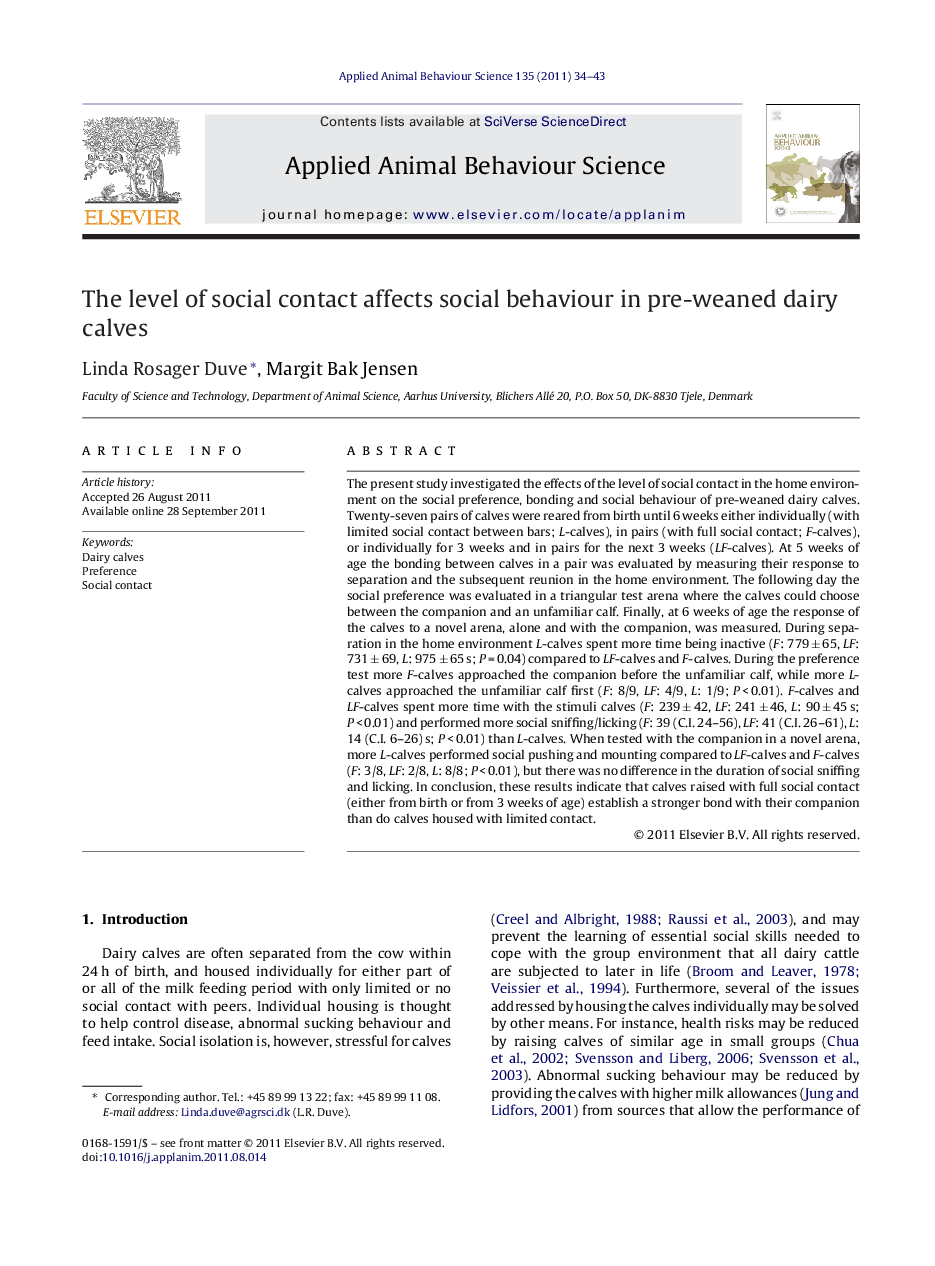| کد مقاله | کد نشریه | سال انتشار | مقاله انگلیسی | نسخه تمام متن |
|---|---|---|---|---|
| 4523129 | 1625381 | 2011 | 10 صفحه PDF | دانلود رایگان |

The present study investigated the effects of the level of social contact in the home environment on the social preference, bonding and social behaviour of pre-weaned dairy calves. Twenty-seven pairs of calves were reared from birth until 6 weeks either individually (with limited social contact between bars; L-calves), in pairs (with full social contact; F-calves), or individually for 3 weeks and in pairs for the next 3 weeks (LF-calves). At 5 weeks of age the bonding between calves in a pair was evaluated by measuring their response to separation and the subsequent reunion in the home environment. The following day the social preference was evaluated in a triangular test arena where the calves could choose between the companion and an unfamiliar calf. Finally, at 6 weeks of age the response of the calves to a novel arena, alone and with the companion, was measured. During separation in the home environment L-calves spent more time being inactive (F: 779 ± 65, LF: 731 ± 69, L: 975 ± 65 s; P = 0.04) compared to LF-calves and F-calves. During the preference test more F-calves approached the companion before the unfamiliar calf, while more L-calves approached the unfamiliar calf first (F: 8/9, LF: 4/9, L: 1/9; P < 0.01). F-calves and LF-calves spent more time with the stimuli calves (F: 239 ± 42, LF: 241 ± 46, L: 90 ± 45 s; P < 0.01) and performed more social sniffing/licking (F: 39 (C.I. 24–56), LF: 41 (C.I. 26–61), L: 14 (C.I. 6–26) s; P < 0.01) than L-calves. When tested with the companion in a novel arena, more L-calves performed social pushing and mounting compared to LF-calves and F-calves (F: 3/8, LF: 2/8, L: 8/8; P < 0.01), but there was no difference in the duration of social sniffing and licking. In conclusion, these results indicate that calves raised with full social contact (either from birth or from 3 weeks of age) establish a stronger bond with their companion than do calves housed with limited contact.
Journal: Applied Animal Behaviour Science - Volume 135, Issues 1–2, 30 November 2011, Pages 34–43